Mon Repos Saves Endangered Turtles
I encountered endangered turtles at Mon Repos, Bundaberg. For me, Karen Tyrrell, author of children’s eco book Song Bird Great Barrier Reef Rescue, it was a dream come true.
Song Bird Great Barrier Reef Rescue is my children’s STEM-enviro novel featuring science, technology, engineering and mathematics. It encourages children to take action to save the reef and its marine creatures.
I’m privileged Sir David Attenborough, Queensland Museum, schools and libraries support my book.
What did I experience at Mon Repos?
A ranger guide led Steve Tyrrell and I down to the beach to search for a loggerhead turtle nest. Dusk and rain clouds make the night darker than normal. Moonlight struggled to break through but was visible high on the horizon.
One by one, a clutch of 132 baby turtle hatchings emerge from the sand. Thrilled, I touch a hatchling in the palm of my hand. Their powerful flippers paddle in non-stop swimming motions.
Shining a torch light, I join a people-tunnel of low light beams guiding the hatchings from their release point into the ocean. Incredibly exciting as turtles actually crawl over my feet on their way to freedom. Such an exhilarating and emotional experience.
Please place this to the top of your bucket list.
How is Climate Change endangering Turtles?
Australia has experienced four years of high summer temperatures. Loggerhead Turtle eggs incubate between 26–32 °C. Any higher than that, turtle hatchlings won’t survive the birthing process or scampering on super-heated beach sands.
Of most interest, I found turtle eggs kept at a constant incubating temperature of 32 °C become females. Eggs incubating at 28 °C become males. An incubation temperature of 30 °C results in an equal ratio of male to female hatchlings.
High sea levels and stronger storms erode and destroy their beach habitats. Warming oceans change ocean currents, potentially introducing sea turtles to new predators and harming the coral reefs some of them need to survive.
5 Ways Kids can Save Marine Turtles.
- Cut the GLOW to help turtles go – Turn off outside lights, pull curtains closed
- Reduce plastics especially bags and straws.
- Don’t let helium balloons go up into the sky. They fall into our water ways.
- Watch where you walk on the beach especially at night.
- Pick up all litter in the waterways.
What is Mon Repos Turtle Centre?
This area has the largest concentration of turtles on Eastern Coast of Australia. The centre is dedicated to endangered marine turtles: research, protection and education
A turtle ranger/scientist takes you on a group tour from 7pm -2am. Opens from October to March.
Phone 1300 722 099.
Mon Repos Encounter Book HERE
FREE Gift Bags with book, Song Bird Great Barrier Reef Rescue
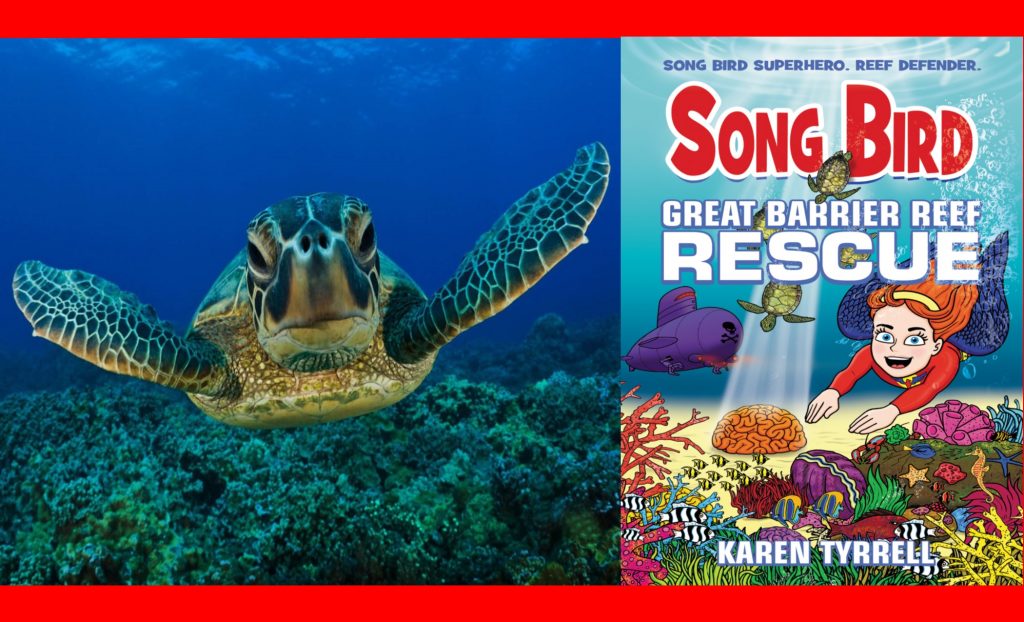
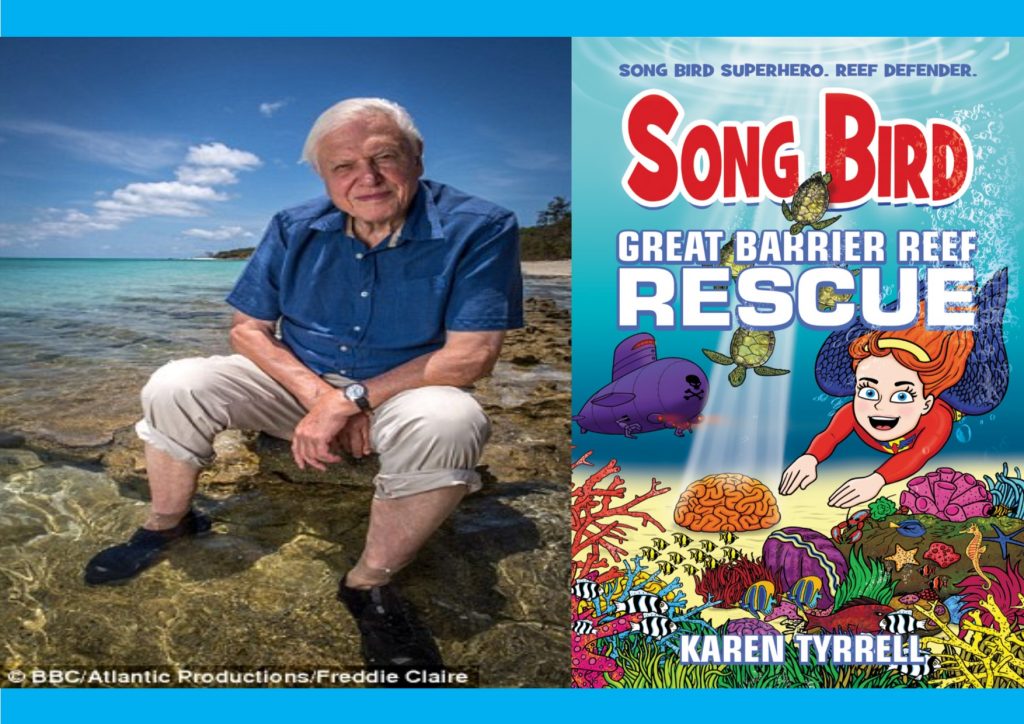
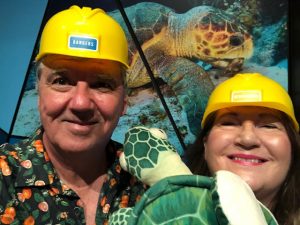
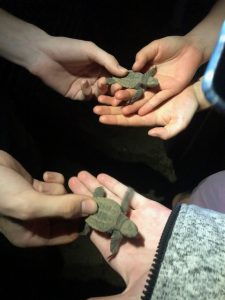
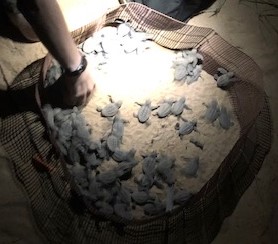
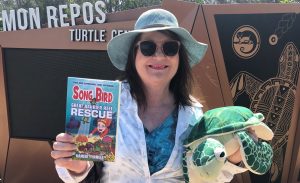
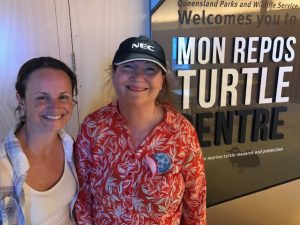
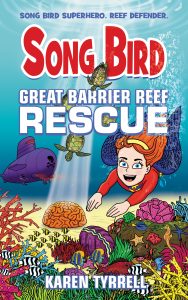
It was a fascinating experience at Mon Repos. I was hoping to see the big 2, turtles laying and eggs hatching but would have settled for either. No laying tonight, a bit late in the season but we saw the hatchlings emerge from a nest. The rangers relocate many nests to shade so the eggs survive. Climate change means the beach is getting hotter, for the species to survive this is an effective way. Ther rangers took us to a small enclosure and shone a torch on the sand above the nest to simulate moonlight. All the little critters emerged like a swarm of cockroaches! They were collected in a bucket and transferred close to the water where they swiftly crawled into the sea. It was a beautiful moment. A highlight was when the rangers dug up a natural nest where the eggs had already hatched. The objective to count eggs to determine how many natural hatchlings. Over 70 and she found 1 live hatchling that had not emerged a metre down. Ranger Rebecca and Karen took it to the sea shore where it swam away. Amazing.
Thanks Steve, for being there to share one of the most profound experiences of my life.
Hugs, Karen x